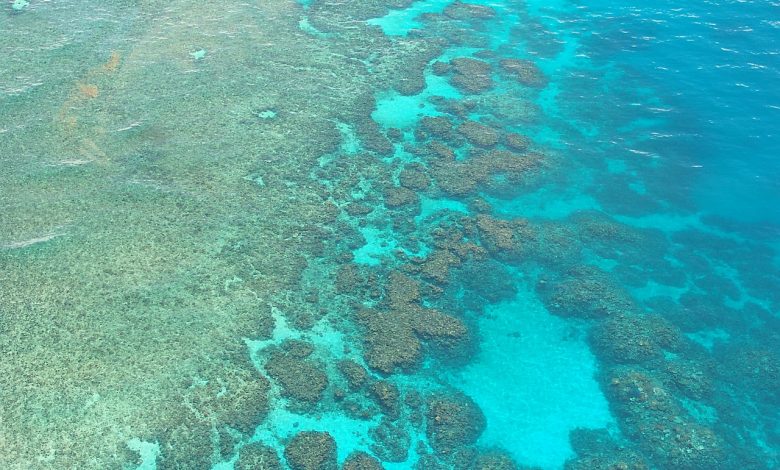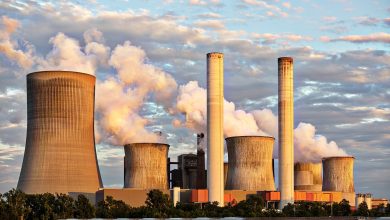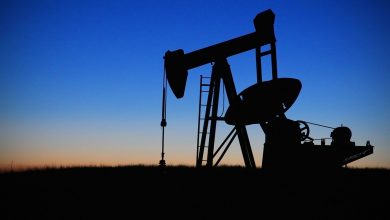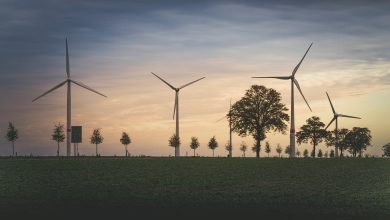Coal vs Coral: How the Australian Coal Industry Threatens the Existence of the Great Barrier Reef

Great Barrier Reef Overview
Australia’s Great Barrier Reef is one of the most iconic and biologically diverse ecosystems in the world. The Great Barrier Reef stretches over an area of about 348,000 square kilometers and supports a wide variety of species, habitats, and biological processes (Commonwealth of Australia, 2015). However, in recent years, the Great Barrier Reef has experienced an increasing number of anthropogenic pressures that have threatened its fragile ecosystems. In addition to incremental impacts from climate change, land-based run-off, and illegal fishing operations, the fossil fuel industry has also had an adverse impact on the Great Barrier Reef.

Commodity Economy
The Australian economy is driven by the sale of commodities. With abundant natural resources like iron ore, coal, and natural gas, Australia has become a major global exporter. As the global demand for these products has increased, especially with coal and natural gas, the need for supportive infrastructure has also grown. Coastal port expansion and dredging to accommodate increasing levels of coal and natural gas exports have contributed to significant changes within coastal habitats that have had a detrimental effect on the Great Barrier Reef.
Port expansion and dredging are examples that show how increased economic activity related to fossil fuel exports has adversely impacted marine environments. Unlike the impacts of climate change and land-based run-off, which cause cumulative impacts to the Great Barrier Reef, port expansion and dredging can most often be categorized as direct impacts. The destructive landscape changes associated with the development of new ports and shipping channels cause immediate localized impacts. However, these activities also have some indirect and cumulative impacts from the release of fine sediment, changes related to ocean hydrodynamics, increases in artificial lighting, and the disposal of marine dredged materials (Australian Institute of Marine Science, 2015). With the demand for port growth expected to continue into the future, it will be essential for Australia to balance economic growth in a way that emphasizes the protection of coastal ecosystems.

Port Expansion
Ports on the northwestern coast of Queensland are vital export hubs for Australian fossil fuels like coal and liquefied natural gas (Commonwealth of Australia, 2015). Moreover, these ports also serve as major import hubs for products from around the world. The creation of a series of mega coal mines in Central Queensland has initiated the development of new export infrastructure and has dramatically increased shipping traffic along the coast of Queensland (Greenpeace, 2012). The unprecedented increase in coal exports has placed a serious burden on the Great Barrier Reef and its accompanying ecosystems. To support the increase in coal exports, Australia has been expanding its coastal ports.
The Australian Marine Conservation Society has warned that the expansion of ports along the coast of Queensland will threaten the Great Barrier Reef. However, the Australian government has permitted the expansion of numerous ports such as the Port of Townsville, which will include a $1.64 billion port expansion along with the dredging of 11.48 million cubic meters of sediment (Smith, 2017). Rather than expanding ports to accommodate fossil fuel exportation, environmentalists say that Australia should focus more resources on protecting one of its greatest assets, the Great Barrier Reef.

Abbot Point
In 2013, a port expansion project along Abbot Point in Queensland gained international attention after reports highlighted how dredging material would be dumped within the boundaries of the Great Barrier Reef Marine Park. As natural resource professionals and environmentalists continue to express concerns about these types of projects, the Australian government has insisted that strict environmental regulations are in place to protect fragile ecosystems. Even with government support, ominous signs over the past couple of years have started to add to the debate over Australia’s once rock-solid coal industry.
As one of the world’s largest suppliers of coal, Australia has benefited financially from the growth of developing nations like China and India. As energy consumption in these countries has been increasing, Australia has stepped in to supply them with abundant and cost-effective supplies of coal. In 2016, Australia’s coal exports rose to 200 million tons annually, which was second only to Indonesia and nearly double the coal exports of Russia (Regan, 2016). While other developed nations in North America and Europe have seen coal exports decline steadily, coal exports in Australia have continued to rise. As these exports have steadily increased over the past few years, a number of scientific reports have linked increased coal usage to bleaching that has been recorded across the 1,400-mile Great Barrier Reef system.

Land Use Impacts
In addition to coal exports and energy production in general, land use plays a pivotal role in the health of the Great Barrier Reef. When land use patterns and land management practices favor development, agriculture, and industrialization over conservation, the pressures can increase for aquatic ecosystems. These pressuring have threatened the health of the Great Barrier Reef by influencing changes related to hydrodynamics, water quality, and the overall availability of aquatic habitats (Argent, 2016).
More balanced land use practices are critical for the future of the Great Barrier Reef. A recent study from the University of Western Australia’s Oceans Institute has concluded that anthropogenic deforestation outweighs the potential impacts of climate change as a major threat to coral reefs (Zinke & Sinclair-Jones, 2013). The findings show how the changes in sedimentation and nutrient flow into coastal areas because of the deforestation of landscapes will have a more adverse impact on coral reefs within the near future than climate change. Coal industry advocates point to these studies as proof that coal has been overly demonized.

Fitzroy River Delta
Despite the awareness about the effects of land use change, Australia has experienced a decline in the health of coastal ecosystems and its Great Barrier Reef as a result of continued land use changes. One of the most severely impacted coastal areas has been the Fitzroy River delta region, located within the southcentral section of coastal Queensland. Deforestation related to development and agriculture has contributed to increases in pollutant and sediment runoff within the Fitzroy River delta.
After significant storm events, the water within the Fitzroy River delta region becomes murky and brown because of the runoff. The mixture of sediment, nutrients, and pesticides from agricultural run-off and deforested areas has a harmful impact on the corals and sea grasses. The competing interests in creating a sustainable land-sea relationship includes development, agricultural, and conservation stakeholders. Based on the quality of the coral and sea grasses in the Fitzroy River delta region, it is apparent that the development and agricultural constituencies have an edge over the conservation stakeholders. Some advocates have argued for the need to re-empower the Great Barrier Reef Marine Park Authority as a step in the right direction when it comes to coastal conservation and reef protection.
Ocean Acidification
While the debate over which industry is having the greatest impact on the Great Barrier Reef has escalated in recent years, the health of the reef system has continued to deteriorate. As a result of agricultural and development runoff, deforested landscapes, and emissions from coal energy generation, ocean acidification has started to become a prime factor that has had an impact on the Great Barrier Reef. A 2007 report published by the Proceedings of the National Academy of Sciences highlighted how ocean acidification has been lowering the ocean’s pH and removing water of critical carbonate ions. Without these ions, marine organisms—like sea urchins, shellfish, coral reefs, and some types of plankton— are unable to soak up calcium carbonate to form their durable exterior exoskeletons and shells (Carlowicz, 2008).
Sea urchins, shellfish, coral reefs, and plankton provide food and critical habit for other marine species. When impacts to these organisms occur, other cascading impacts to all other marine life can also occur. The bleaching of the ocean’s coral reefs has been one of the main effects of ocean acidification that has been the subject of media headlines in recent years. Besides ocean acidification caused by acid rain, the National Oceanic and Atmospheric Administration (NOAA) has started to monitor how excess carbon dioxide already in the atmosphere from fossil fuel emissions has also been contributing to decreasing pH levels in the world’s oceans.

Cumulative Impacts
It’s clear that the cumulative effects of ocean acidification, urban run-off, and fossil fuel emissions all have an effect on Australia’s Great Barrier Reef. However, scientific research shows that the direct impact of dredging for the expansion of coal ports has among the most immediate and severe effect on the reef’s ecosystem. At the same time, both the Australian government and the local governments in the Queensland region do not have effective policies to protect the reef from potentially catastrophic damage. Moreover, the Queensland government has traditionally rejected the idea of scientific evidence related climate change, while the position of the Australian government as a whole has been relatively ambivalent (Brodie, 2014).
Climate change, agricultural pollution, coastal development, and port dredging have cumulatively put a great deal of stress on the Great Barrier Reef. In 2019, a study published in the journal Nature revealed that a nearly 90 percent collapse in new coral reef formation was seen on the Great Barrier Reef since bleaching was first discovered (Wilson, 2020). The coral reef die-off has become one of the most critical environmental issues to ever be experienced. In July 2015, the World Heritage Committee called upon world leaders to address the cumulative impacts of poor water quality, fossil fuel consumption, climate change, and coastal development to prevent the Great Barrier Reef from disappearing completely (Grech et al, 2016).

The Environmental Decision-Making Process
The restoration of the Great Barrier Reef continues to be hindered by an environmental decision-making process that has failed to incorporate the cumulative impacts of climate change and impacts of greenhouse gas emissions sourced from Australia’s coal exports (Grech et al, 2016). Overwhelming scientific evidence continues to point to coal mining, coal energy generation, and dredging related to the development of new coal seaports as some of the most critical elements that have led to the decline of the Great Barrier Reef.
A 2012 reactive monitoring report conducted by the International Union for Conservation of Nature (IUCN) and the United Nations Educational, Scientific, and Cultural Organization (UNESCO) World Heritage Center found that new coal port development in Australia posed as a significant threat to the Great Barrier Reef and conservation in general (Douvere and Badman, 2012). However, since this report was published, the Australian government continued to move forward with six new thermal coal mining developments that would require port infrastructure expansion and dredging (Grech et al, 2016). If the Australian government is serious about protecting its Great Barrier Reef, it will be essential for government leaders to evaluate the risks associated with the continued expansion of the coal industry.
Sources
Argent, R. (2016). “Changing land use and management.” Commonwealth of Australia.
Australian Institute of Marine Science, (2015). “Dredging – what is the impact on the Great Barrier Reef?” Australian Government.
Brodie, J. (2014). “Reef Madness.” New Scientist: Vol. 222, Issue 2970
Commonwealth of Australia. (2015). “Reef 2050 Long-Term Sustainability Plan.” Australian Government.
Douvere, F. & Badman, T. (2012). “Mission report: reactive monitoring mission to the Great Barrier Reef (Australia).” United Nations Educational, Scientific and Cultural Organization-International Union for Conservation of Nature.
Grech, A., et al. (2016). “Coal, Cumulative Impacts, and the Great Barrier Reef.” The Journal of the Society for Conservation Biology: 9(3), 200–207.
Greenpeace. (2012). “Boom Goes the Reef.” Greenpeace Australia Pacific.
Kroon, F., et al. (2016). “Towards protecting the Great Barrier Reef from land-based pollution.” Global Change Biology.
Regan, J. (2016). “Dredging for coal port near Barrier Reef gets nod from Australia.” Reuters.
Smith, K. (2017). “Great Barrier Reef at risk from port expansion.” Green Left.
Wilson, S. (2020). “Record fires and dead coral reefs aren’t dulling Australia’s lust for coal.” The Washington Post.
Zinke, J., & Sinclair-Jones, M. (2013). “Human deforestation outweighs climate change for coral reefs.” The University of Western Australia.



